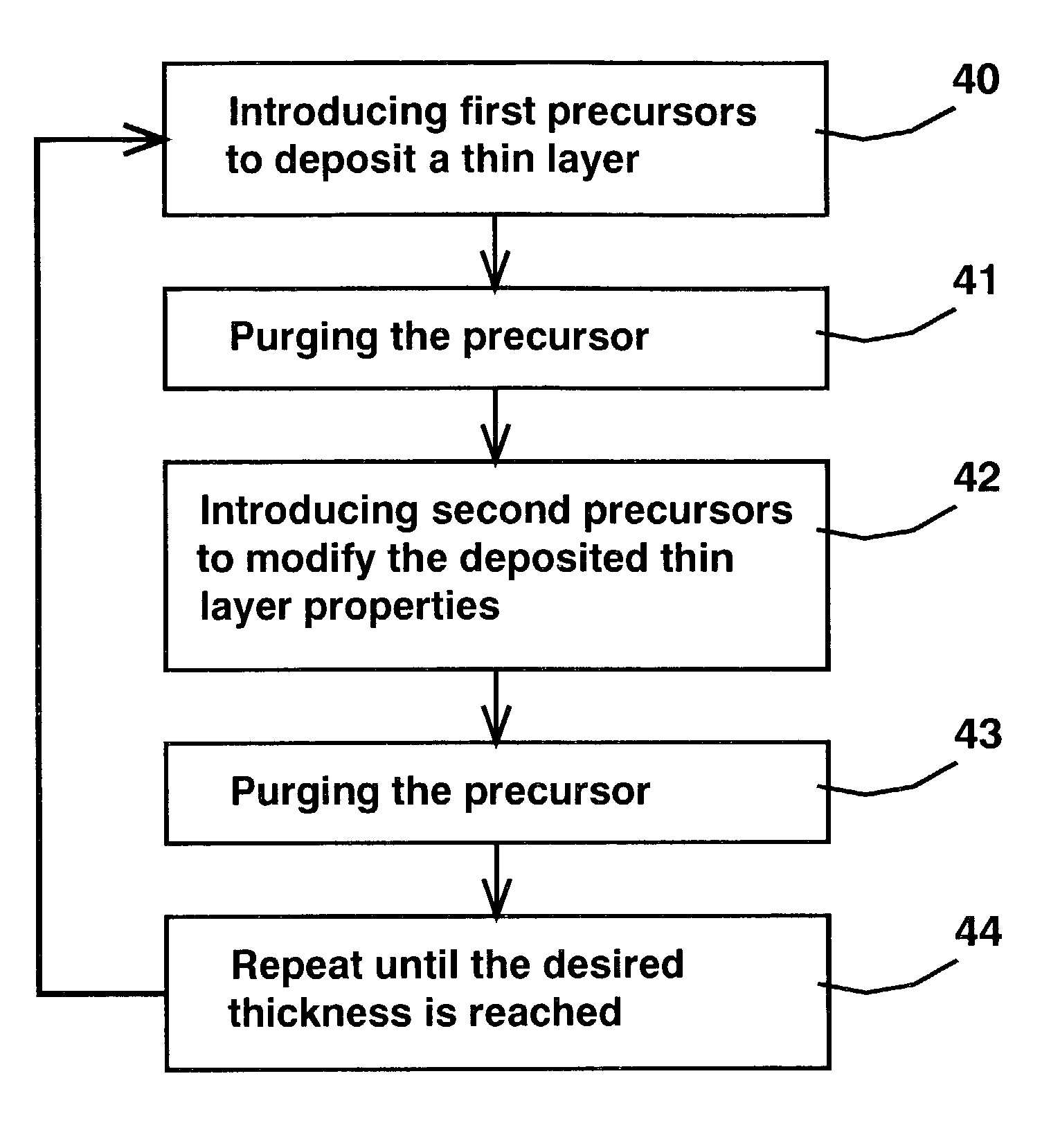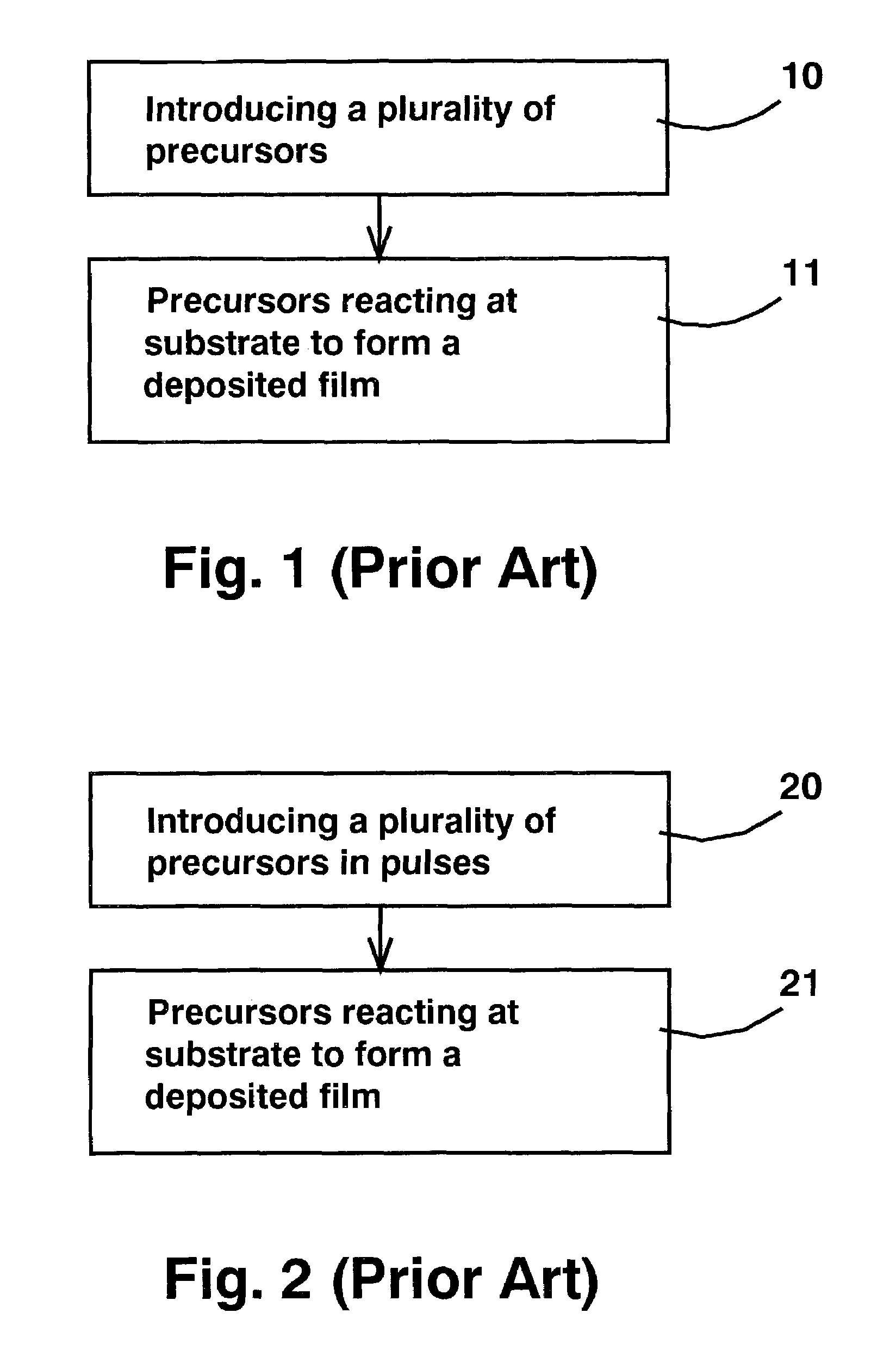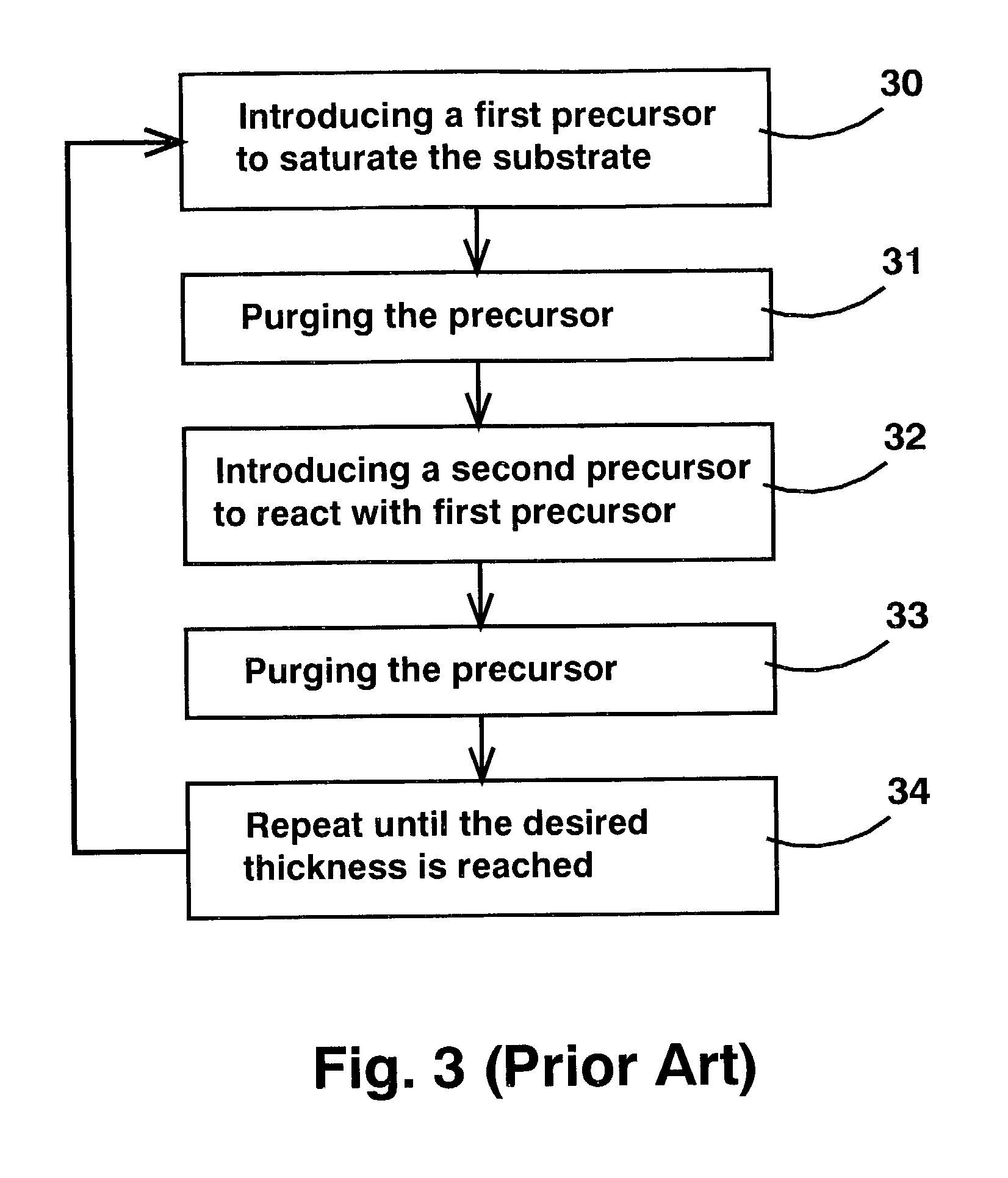Nanolayer deposition process
a thin film, nanolayer technology, applied in the direction of liquid/solution deposition chemical coating, chemical vapor deposition coating, solid/suspension deposition chemical coating, etc., can solve the problem of high temperature for deposition, cvd typically requires high temperature which may not be compatible, and produces low-quality films. the effect of high energy and reduced power
- Summary
- Abstract
- Description
- Claims
- Application Information
AI Technical Summary
Benefits of technology
Problems solved by technology
Method used
Image
Examples
Embodiment Construction
[0042]FIG. 1 shows a flowchart of a prior art CVD process. In step 10, the precursors are introduced into the process chamber. The precursors are then react at the substrate surface to form a deposited film in step 11. The conditions for the precursors reaction can include plasma energy, thermal energy, photon energy, laser energy. The deposition characteristics of CVD process is the non self-limiting nature, meaning increase with process time and substrate temperature.
[0043]FIG. 2 shows a flowchart of a prior art pulse CVD process. In step 20, the precursors are introduced into the process chamber in pulses. The precursors are then react at the substrate surface to form a deposited film in step 21. Similar to CVD process, pulse CVD process can incorporate plasma energy, thermal energy, photon energy, laser energy. The pulse CVD process conditions can include precursor pulsing, plasma pulsing, thermal energy pulsing, photon energy pulsing, and laser energy pulsing. The deposition ch...
PUM
| Property | Measurement | Unit |
|---|---|---|
| pressure | aaaaa | aaaaa |
| temperature | aaaaa | aaaaa |
| thickness | aaaaa | aaaaa |
Abstract
Description
Claims
Application Information
 Login to View More
Login to View More - R&D
- Intellectual Property
- Life Sciences
- Materials
- Tech Scout
- Unparalleled Data Quality
- Higher Quality Content
- 60% Fewer Hallucinations
Browse by: Latest US Patents, China's latest patents, Technical Efficacy Thesaurus, Application Domain, Technology Topic, Popular Technical Reports.
© 2025 PatSnap. All rights reserved.Legal|Privacy policy|Modern Slavery Act Transparency Statement|Sitemap|About US| Contact US: help@patsnap.com



